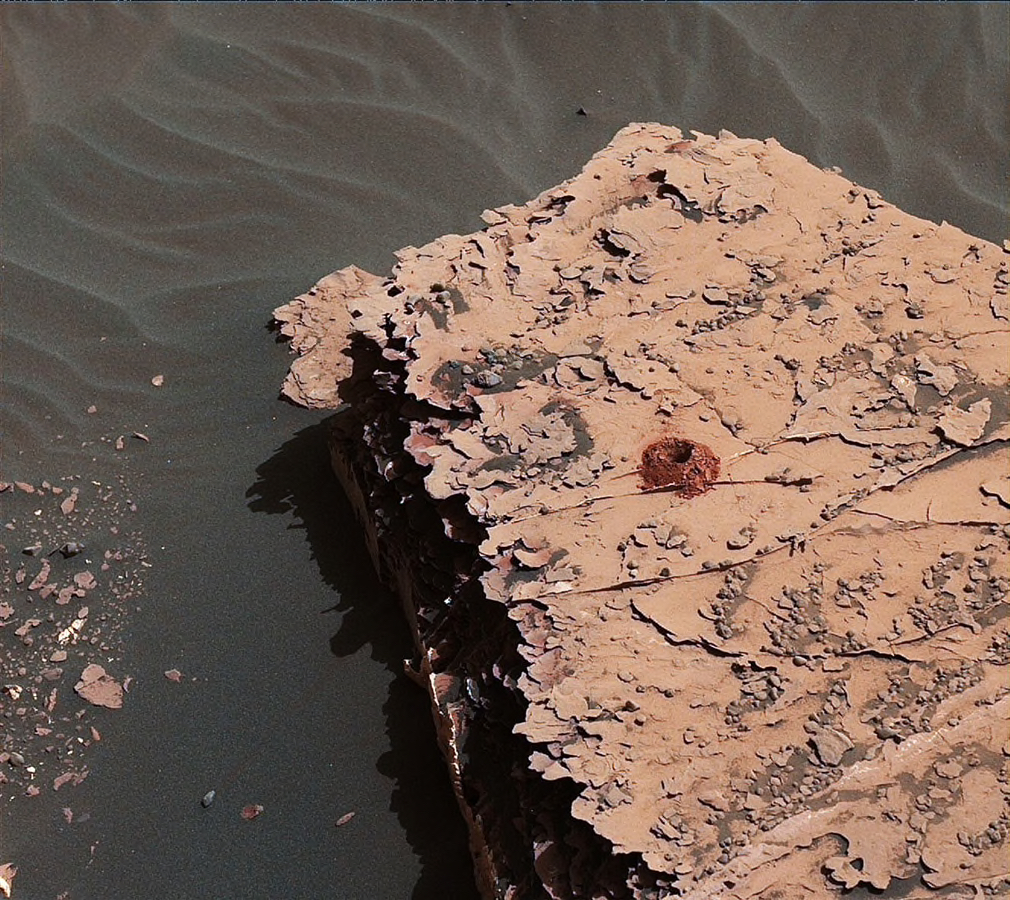
After many months of testing and devising new techniques since experiencing mechanical problems, NASA’s Curiosity rover is finally drilling again! The latest test this past weekend proved a success, producing the first drill hole in a rock in over a year. So it seems that the rover may now be ready to resume regular drilling operations again, which had been routine until the problems arose in December 2016.
“The team used tremendous ingenuity to devise a new drilling technique and implement it on another planet,” said Curiosity Deputy Project Manager Steve Lee of JPL. “Those are two vital inches of innovation from 60 million miles away. We’re thrilled that the result was so successful.”
Earlier tests had produced only partial holes, not seep enough to extract any powdered rock samples, but this time the hole was full-depth, with enough sample retrieved for analysis. The drill penetrated about 2 inches (50 millimeters) into a rock target called “Duluth,” using a new percussive drilling technique called Feed Extended Drilling (FED). The technique uses the force of the robotic arm to push the drill bit forward as it spins, with a hammering force added to the drill bit. The drill bit is extended out past two stabilizer posts that were originally used to steady the drill against rocks.
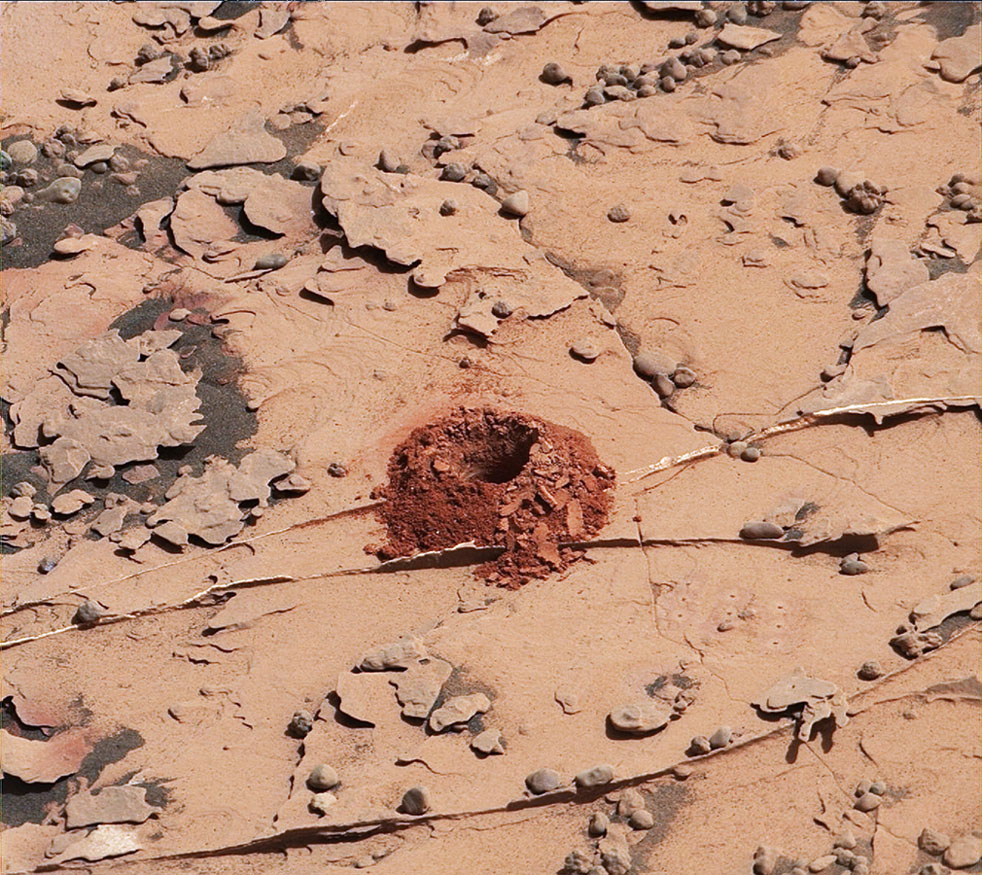
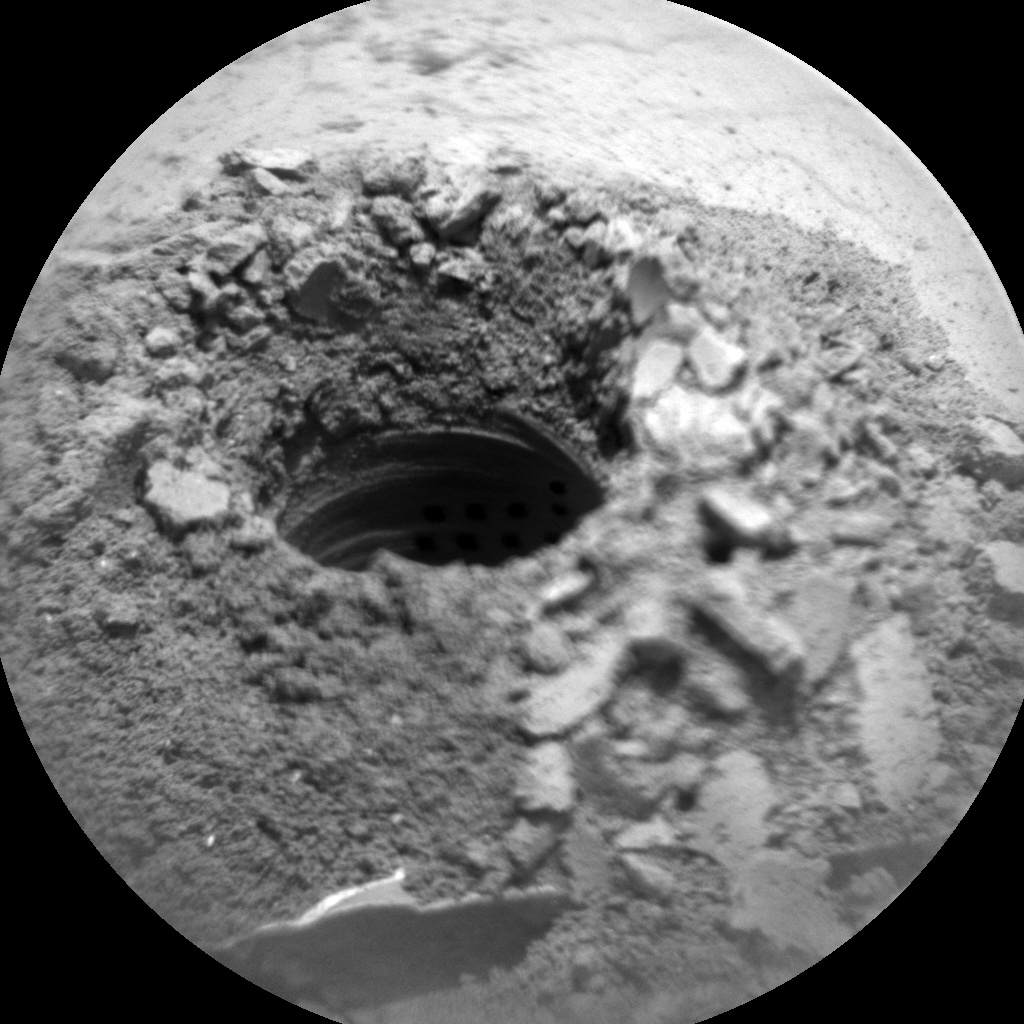
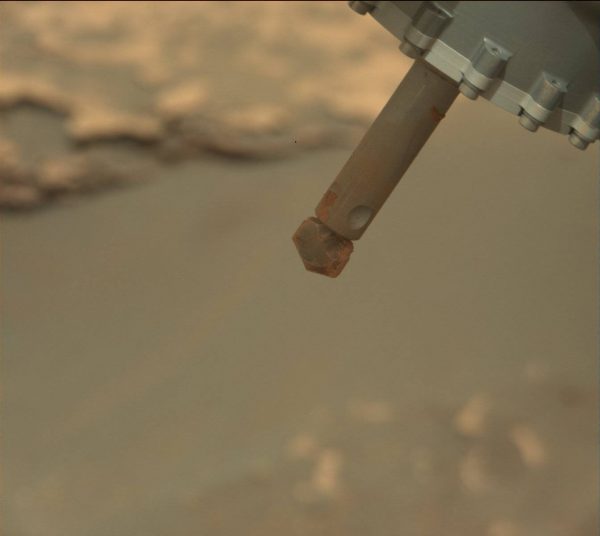
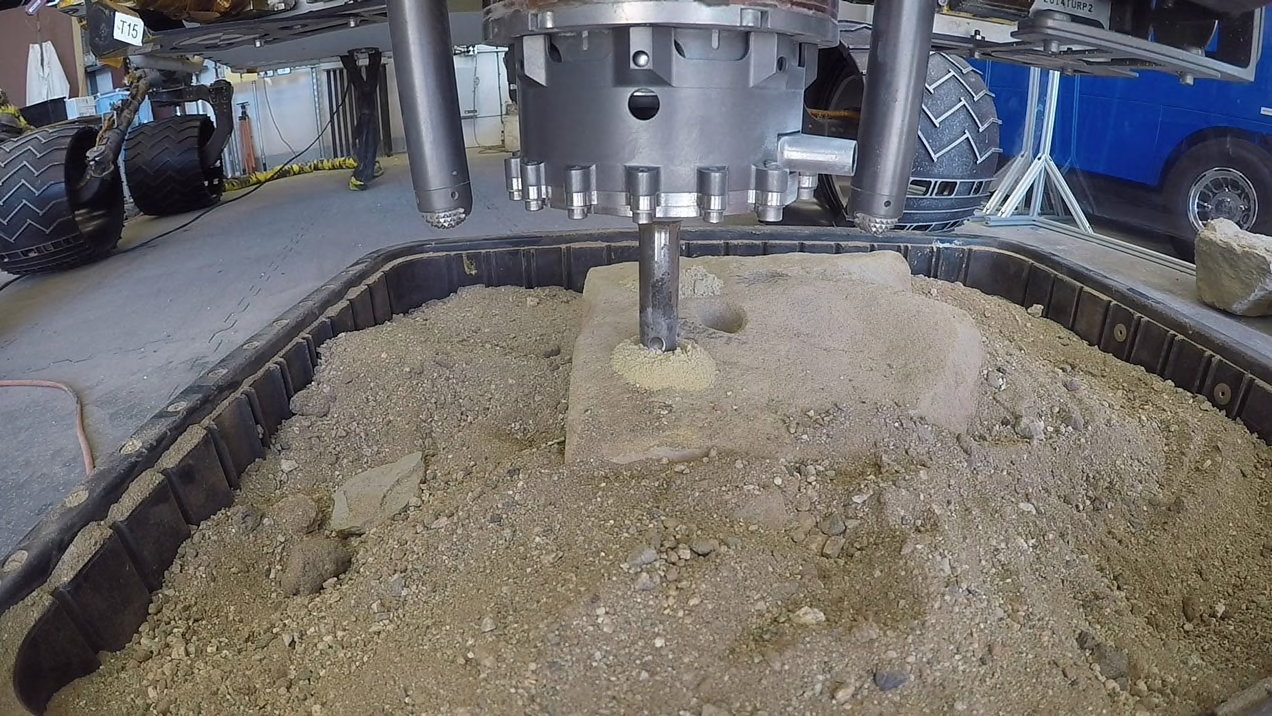
“The team used tremendous ingenuity to devise a new drilling technique and implement it on another planet,” said Curiosity Deputy Project Manager Steve Lee of JPL. “Those are two vital inches of innovation from 60 million miles away. We’re thrilled that the result was so successful.”
“This is our next big test to restore drilling closer to the way it worked before,” said Lee. “Based on how it performs, we can fine-tune the process, trying things like increasing the amount of force we apply while drilling.”
While this latest test was a success, there is still more work to be done.
“We’ve been developing this new drilling technique for over a year, but our job isn’t done once a sample has been collected on Mars,” said Tom Green, a systems engineer who helped develop and test the new drilling method. “With each new test, we closely examine the data to look for improvements we can make and then head back to our testbed to iterate on the process.”
The next step will be to test a new process for delivering the drill samples to the laboratories onboard the rover, which should happen as soon as Friday. The rover’s camera’s will be used to estimate how much powdered rock sample trickles out while the drill is running backwards.
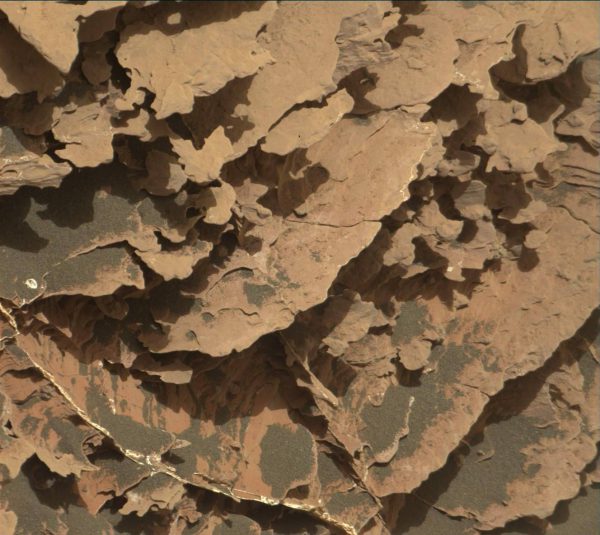
Drilling is one of the most important aspects of the rover mission, where samples of rocks are ground to powder and analyzed by the onboard laboratories. The results tell scientists how the rocks formed and the environment of Gale crater millions and billions of years ago. Thanks to these experiments, we now know that Gale crater used to be a large lake or series of freshwater lakes, meaning that this was once a habitable environment, at least for microbes.
Curiosity is now moving toward an area rich in clay minerals, backwards, after heading downhill from Vera Rubin Ridge since mid-April. The target is part of a thick layer of rock just below the ridge.
“We’ve purposely driven backwards because the team believes there’s high value in drilling a distinct kind of rock that makes up a 200-foot-thick [about 60 meters] layer below the ridge,” said Curiosity Project Scientist Ashwin Vasavada of JPL. “We’re fortunately in a position to drive back a short way and still pick up a target on the top of this layer.”
More information about Curiosity is available on the mission website.
FOLLOW AmericaSpace on Facebook!
.




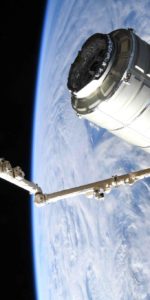
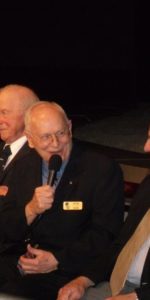
The “work around” points to the necessary back up plans that will one day be needed for eventual manned exploration of the Red Planet. Congratulations!